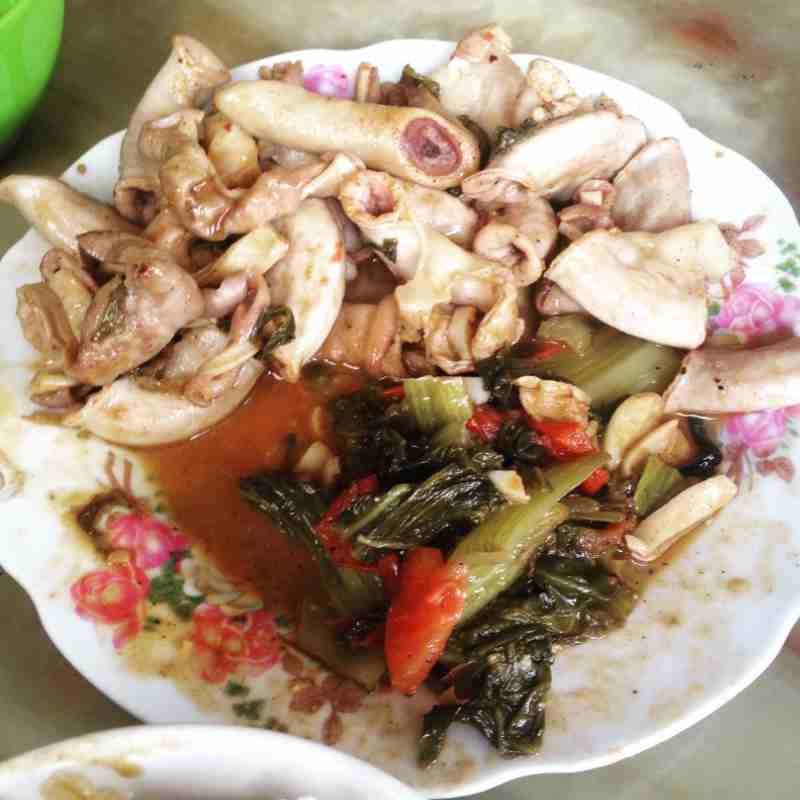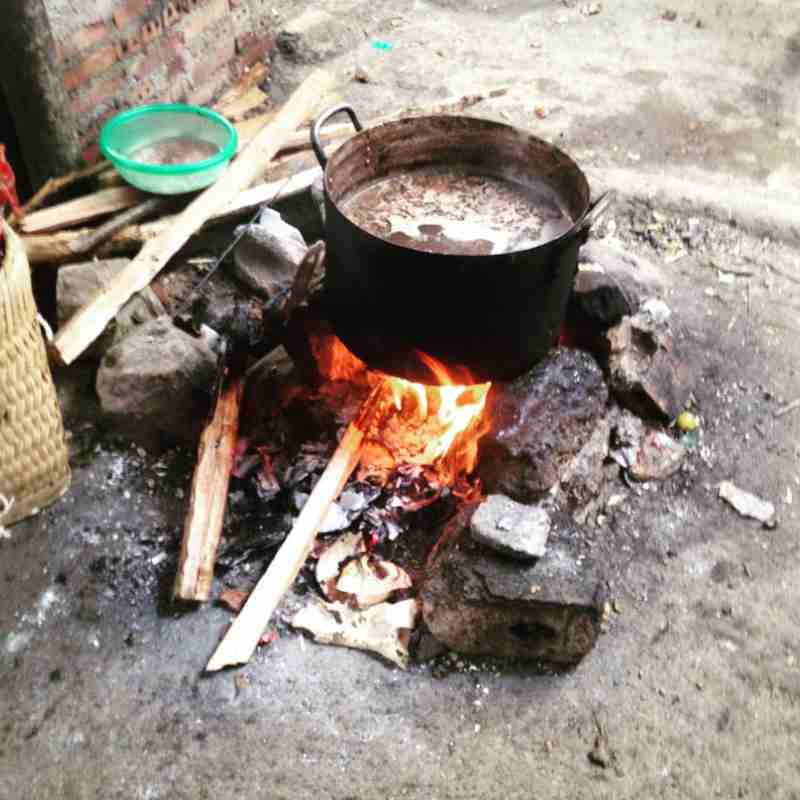How To Feed Yourself On The Road And Why Cooking Is Overrated
I’ve compiled these camp cooking tips for long-distance bicycle touring over a decade of bike-based adventures. I’m sharing these suggestions for camp cooking ideas in the spirit of making your next adventure as tasty as it can be. I’ve learned many tough lessons from the road – and starving in the cold ain’t fun!
One might assume that cooking homemade meals would be the holy grail of sustenance when embarking on an epic round-the-world bicycle tour. After all, what better way to nourish yourself than through wholesome ingredients and the satisfaction of creating your own masterpiece? Well, think again.
Cooking on big bike trip can quickly become a burdensome chore

Bicycle Touring Camp Cooking Tips; Don’t Bother!
Picture this: you’ve just pedalled 100 kilometres against strong headwinds, battling fatigue and sore muscles all day. You could spend an hour faffing with a few ingredients and a bag of pasta. Slaving over a crappy camp stove while juggling pots and pans in the wilderness. Maybe it’s worth the effort. Sometimes, it certainly is.
Instead, why not take a break from kitchen duties? Embrace simplicity by choosing lightweight dehydrated meals or energy-packed snacks readily available at local stores along your route. The beauty lies in experiencing regional cuisines firsthand. Indulging in authentic street food or savouring locally prepared delicacies is integral to cultural immersion.
I learned many things from my Hippie Trail by Bike expedition. One of the key takeaways was that three meals a day are a fallacy built upon the notion of an antiquated working day. Learning to understand and trust my body was part of the great experiment of adventure bike travel.
Hunger is merely a sensation. The ability to manage it is a gift of awareness
I’m not suggesting that you starve yourself. Simply put, the requirements and uncertainties of long-term bicycle touring will encourage situations where a hot meal is not always guaranteed. Awareness that hunger is a fleeting sensation is a great place to begin training your mind towards the mental stamina you’ll rely on when times get tough.
View this post on Instagram
Sustenance On A Long Bike Tour Need Not Be All Instant Noodles And Dirty Saucepans
Moreover, foregoing cooking allows for unburdened exploration during rest days. Imagine discovering hidden gems off the beaten path without being tied down by meal prep routines! Relishing every moment and engaging with locals trumps hours spent chopping onions any day.
So ditch those cumbersome Trangias and camp cookware sets aspiring word cyclists tend to carry. Go light, embrace spontaneity, and feast your senses upon new flavours. Let cooking take a backseat as you embark on a new way of feeding your body, mind, and soul.
How Not To Cook On A Long-Distance Bicycle Tour
How many times have you sat on the dust after a long day in the saddle with the excitement of yet another bowl of pasta noodles and a tasty stock cube for supper? I know from experience that ‘penne all’anything-you-can-find’ is an essential staple of the bicycle touring store cupboard.
On my long-distance solo bike tours, I tend to always carry a bag of penne and a few stock cubes as emergency rations.
But after so many miles with nothing but a bland bowl of stodge to munch on, I wanted to share my top camp cooking tips to expedite your own culinary adventures.

Camp Cooking Store Cupboard Staples
First and foremost, planning is key. Before hitting the road, plan your meals for each day of the trip. On a long tour, fresh food a few days ahead is about as much as you can carry, with dried fruits and preserved options making up the difference. This will help you stay organized and ensure you have all the necessary ingredients.
It’s also wise to opt for lightweight yet nutrient-dense foods like dehydrated fruits, energy bars, and protein-packed trail mixes.
Here are 10 camp cooking tips for eating well on a long-distance bicycle tour:
Pack Dry Fruits
They are a great energy source, easy to carry, and don’t spoil quickly. I make my own trail mix using the best available nuts and dried fruits as a base. A chocolate M&M or Smartie (the candy coating prevents melting in hot climates) adds a sweet treat. I love these mixes because they are so energy-dense and tasty. I particularly enjoy dried mango and kiwi.
Stay Hydrated
Carry a water bottle and refill it regularly. A Sawyer water filter is worth every penny. I used one on my last two tours and carry one whenever I go off-grid or travel the Tropics. It’s easy to use and makes drinking enough water simple and safe.

Local Markets
Buy fresh, local produce for healthier options. I love exploring food stalls. Since I was a teenager, I’ve been fascinated by different foods and flavours. A local food market is a great place to gather supplies for your bike trip and stock up your store cupboard staples.
The weirdest thing I’ve eaten was probably dog meat in North Vietnam.
Energy Bars
Good for quick nutrition, especially during long rides. It goes without saying but these are worth their weight in gold. They’re not always available, but thanks to the popularity of bodybuilding and weight training, energy bars and protein snacks are increasingly easy to find. Here in India, I can get a selection of 25g protein-rich chocolate bars and multigrain snacks in my local shop. This may not be true of many places, so stock up when you can and enjoy accordingly.
I Can’t Believe It’s Nut Butter
High in protein and healthy fats, great for sandwiches or snacks. This is my go-to energy and protein source. I carry a jam, honey or chocolate spread to balance the savoury elements. Stick a banana in a bread roll and apply liberally. Now go do some cycling, you filthy animal! 😉

Portable Ready-to-Eat Snacks
Pack lightweight, non-perishable items like granola, nuts, or trail mix. Add to the mix cured meats if you can find them and chocolate bars if they won’t all melt in ten minutes, and you’re on to a winner.
The only meal I ever refused was in Myanmar. When the eyeball floated up to the surface still attached to the stem, and the next spoonful was a jawbone wth a dozen teeth, I turned it down
I once carried a stove, fuel and a few kilos of rice to the Fann Mountains. Foolishly forgetting that altitude is ruinous to the boiling temperature of water. The rice never really cooked properly and the meals tasted rank. After that, I swore never to use a stove above 2000m.
View this post on Instagram
Try the Street Food
Food trucks and stalls are ideal for on-the-go energy boosts. In India, I ate a lot of bhaji and rice. In Thailand, mango and sticky rice were my staple. Pho in Vietnam is a five-a-day habit for me, and huge, juicy coconuts with soft, tender malai are a top choice throughout the Tropics and Southeast Asia. It’s so easy and quick to eat roadside snacks that it hardly makes sense to prepare a cooked meal. It’s also a huge cultural thing to dine this way, making it affordable. Perfect for a hungry cyclist!
I wouldn’t bother with a tent or a stove in the Tropics. A hammock and street food are better choices.
Indulge Occasionally
Treat yourself to local delicacies to experience the regional cuisine. A splurge every now and then is justified. In the far north of Vietnam, after weeks of nothing but rice and greens, I felt no hesitation in scoffing a couple of pizzas once I was back in civilised society. A couple of cold beers were just the tonic after a wild ride around the remote tribes of the country.
Plan Balanced Meals
Aim for a mix of carbs, proteins, and fats. Depending on your daily mileage, you’ll want to graze a blend of nutritious treats throughout the day. I usually eat the ‘big meal’ when it’s most convenient. A street food snack or a plate of something at a roadside restaurant. This was true of Southeast Asia, India and even more remote regions like Central Asia. Plov, rice cooked in lamb fat, is a staple of the Stans and was easy to take as a parcel after a hearty lunch. The green tea was served in giant flasks at every roadside pit stop along the M41.
Rule for the road: Eat first, think later! Never a good decision was made on an empty belly

Cook Simple Meals
Use a portable stove for easy, nutritious cooking. If you do decide to carry a stove and cooking is your thing, prepare delicious and nutritious meals. I tend to carry tuna or mackerel in a can for these occasions. And almost certainly, for a long bike trip, I’ll have salt, pepper and easy garlic powder for flavourings. Porridge for breakfasts and pasta or rice for dinners are standard options to include in your stash. A pack of stock cubes for emergencies is recommended.
Camp Cooking Tips To Take Away
Eating well on the road is crucial for maintaining energy and overall health. Incorporating a variety of fresh fruits and vegetables, including convenient and nutritious options like dry fruits and ready-to-eat snacks, can greatly enhance your touring experience.
For multi-month bicycle touring, you probably still want to carry a stove to cook with. Not to mention a cup of coffee in the morning.

In Central Asia, for instance, outside of the local markets, it’s hard to find much in the shops beyond biscuits and 20-year-old tins of Communist mystery meat. Fortunately, Adrian travelled out to join me and brought a selection of Army-grade ration packs. We wouldn’t have been without his trusty MSR WhisperLite stove on that section of the Pamirs.
Can’t Cook, Won’t Cook
There are lots of ways to eat well on a bicycle tour. I am advocating for a shift in mindset towards flexibility and experimentation. There is a liberating effect when the stove becomes secondary for meals. A freedom to move with ease and adapt to local conditions and challenges.
Whether you cook each evening or graze your way through the day, be sure to get enough calories. I bonked a couple of times on my bike trips and it was horrible. Eat before you get hungry. Drink before you’re thirsty.
Camp cooking can be a great way to share a meal with new friends on the road. It’s a sociable way to nourish the soul on the long, dusty roads. However you choose to feed yourself on the road, be sure to embrace the world of flavours as you go.
Do you have camp cooking tips to share? Join the conversation with a message in the comments:
